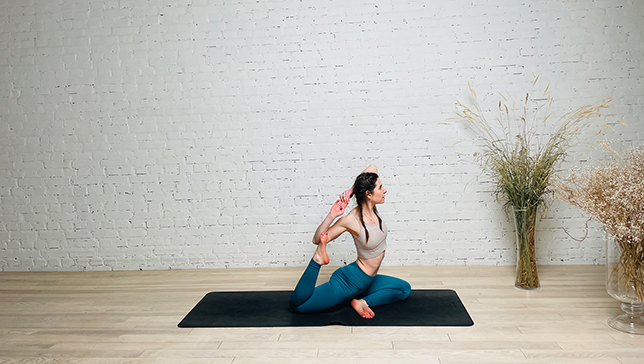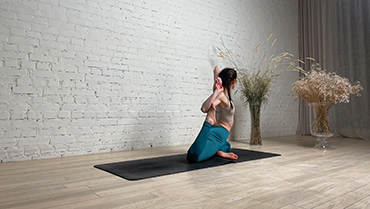Mermaid Pose - Eka Pada Rajakapotasana

Contents
The Mermaid Pose or Eka Pada Rajakapotasana in Sanskrit (Eka means ‘one’, Pada means ‘foot’, Raja means ‘King’, Kapota means ‘pigeon’, and asana means ‘pose’), also known as the Pigeon Pose variation, is an advanced level seated back bending, heart and hip opening yoga pose.
This asana is primarily based on the Pigeon Pose and offers the same advantages. However, it’s more beginner-friendly, as it does not require as much flexibility and strength as the pigeon pose. The mermaid pose targets several body parts at once, including the middle and lower back, hamstrings, ankles, feet, chest, pelvic, quads, hips, and psoas muscles.
Pose Detail
- Difficulty: Advanced, Intermediate
- Body Position: Backbend Yoga Poses, Seated Yoga Poses
- By Type: Balancing Yoga Poses, Chest Opening Yoga Poses, Flexibility Yoga Poses, Hip Opening Yoga Poses, Shoulder Opening Yoga Poses, Strengthening Yoga Poses
- By Benefit: Yoga Poses For Stress Relief
Step-by-Step Instructions
Benefits and Contraindications
Stretches and rejuvenates the spine
Stretches the shoulders and quadriceps
Energizes the body and mind
Opens the hips and chest
Improves circulation to the pelvic region
Sacroiliac injury
Knee injury
Ankle injury
Photo poses in different angles

Modifications, Props and Tips
- If you can’t yet rest your foot in the crease of your elbow, use a strap. Loop a yoga strap around your back foot and hold onto both ends of the strap with your top hand. Let your bottom hand rest on your front thigh.
- If the full backbend is too intense for you, release your top hand back onto your lowered (front) thigh for support.
- If your front-leg hip does not come all the way to the floor, place a folded blanket under your hip for extra support.
- Keep your front shin as parallel to the front edge of your mat as possible. If your hips are tight, your front shin might angle back toward your opposite-leg hip. That is fine. With practice, the flexibility in your hips will increase.